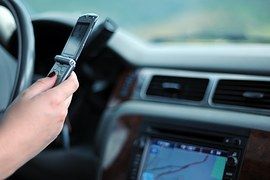Sleep
Sleepiness and Adolescent Drivers
A convergence of risk factors invites tragedy.
Posted April 15, 2016

I have written many times in this blog about relationships that researchers have found between sleep and children’s and adolescents’ performance at school in the domains of academic performance, emotion regulation, and behavior. Impaired attention, speed of processing, reaction time, memory, and judgement have all been associated with sleep that is insufficient in duration, quality, and regularity. But what about the effects of poor sleep on behaviors outside of school?
Driving a vehicle independently is a privilege that teenagers value a great deal. The U.S. allows driving earlier than most countries – 16 in most cases – whereas the modal age worldwide is 18. Most states put restrictions on adolescent drivers for a few months after they attain their license. For example, states may restrict the hours of driving (e.g. midnight to 6:00 AM), and limit the number and age of passengers for the first few months after attaining their license. These precautions are deemed necessary because inexperienced drivers often lack skill and judgement that put them at greater risk for accidents. The fatal crash rate for 16-19 year olds in the U.S. is around three times as high as for drivers 20 years and older.
While much attention has long been paid to driving under the influence of drugs and alcohol, in recent years sleep deprivation has also begun to be recognized as one of the leading causes of vehicle related accidents in the U.S. Sleep deprivation has been proven in lab experiments to impair cognitive and motor performance at levels similar to alcohol and drug intoxication.
Adolescence is a time when a convergence of factors puts them at risk for serious injury or death in vehicle accidents. First, beginning drivers by definition have little driving experience. Second, they are often distracted or encouraged to take risks by passengers. Third, they are at the age when drinking alcohol begins, and since they typically cannot drink at home, they are likely to be driving after drinking or while drinking. Fourth, the availability of smart phones has led to their frequent use during driving by adolescents. Finally, they are often driving after insufficient sleep both early in the morning on school days, and late at night on weekends. A recent study by the Centers for Disease Control found that compared with those who reported sleeping 9 hours or more, adolescents who reported 7 hours or less of sleep a night were more likely to report a variety of risky behaviors including not wearing a seatbelt, driving and drinking, riding as a passenger with a driver who had been drinking, and texting while driving. Because sleep deprivation impairs judgement, it can cause poor decisions (e.g. “I’m driving but will just read my texts, not reply to them.”; “I can drive fine with only one or two drinks.”).
These problems are complex with no single or simple solutions. Legal approaches affecting risky behaviors such as driving and drinking or driving and texting can help, but they can go only so far. We have created a culture that ensures a high level of injury and death in vehicles. Lacking a viable public transportation system, most teenagers drive by necessity or preference. Alcohol is ubiquitous, promoted, and relatively easily accessed. As of 2015, only 12% of 12-17 year olds reported not having a cellphone. In addition to these factors, many adolescents are chronically sleep-deprived. Tragic consequences to themselves and others are inevitable and growing in frequency.
Sources:
http://www.pewinternet.org/2015/04/09/teens-social-media-technology-201…
http://www.iihs.org/iihs/topics/t/teenagers/fatalityfacts/teenagers
Wheaton, A.G., Olsen, E.O., Miller, G.F. Croft, J.B. (2016). Sleep duration and injury-related risk behaviors among high school students – United States, 2007-2013. MMWR Morbidity Mortality Weekly Reports, 65, 337-341.
Williamson, A. M. & Feyer, A. M. (2000). Moderate sleep deprivation produces impairments in cognitive and motor performance equivalent to legally prescribed levels of alcohol intoxication. Occupational and environmental medicine, 57, 649-655.


